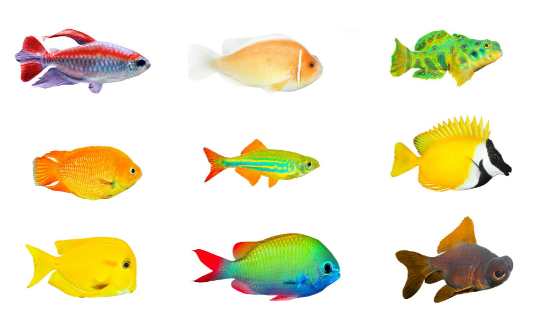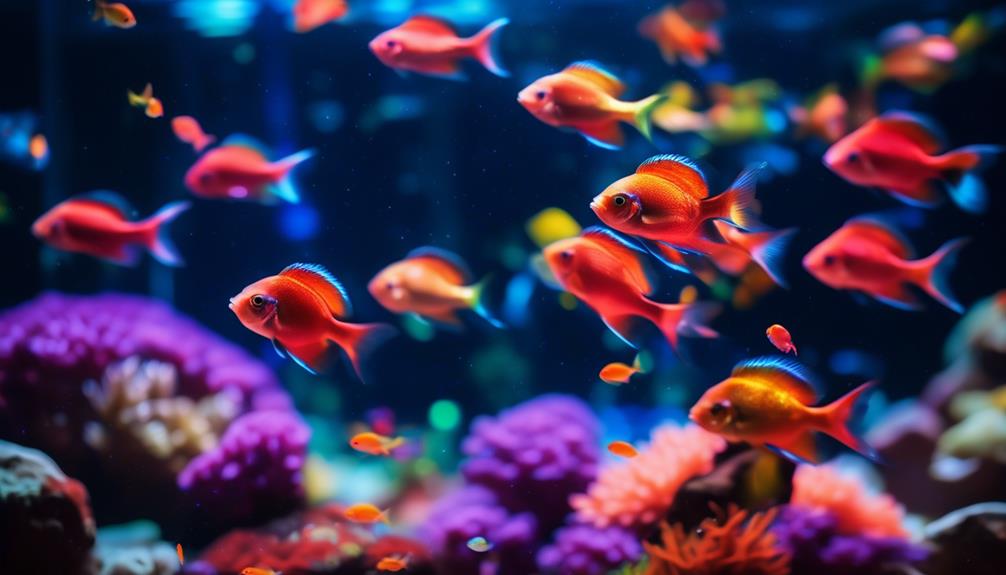
In the vast expanse of the ocean, where colors blend and shimmer like a painter's palette, there exists a creature that embodies the very essence of beauty and grace. This jewel of the saltwater tanks, known as the Anthias fish, captivates the hearts and minds of aquarists worldwide.
With its vibrant hues and intricate patterns, the Anthias fish is a living work of art, a mesmerizing spectacle that begs to be admired. But beneath its colorful exterior lies a world of mystery and challenges, as the complexities of maintaining this species unfold.
Dive into the depths of knowledge and uncover the secrets that make the Anthias fish a true gem in the realm of saltwater aquariums.
Key Takeaways
- Anthias are a diverse group of saltwater fish with over 200 sub-species, known for their vibrant coloring and shoaling behavior.
- They are considered one of the most beautiful and photographed species of fish in saltwater tanks.
- Anthias are generally peaceful towards other fish but can be aggressive towards their own kind, especially in complex social hierarchy systems.
- Maintaining anthias in a tank requires research to ensure compatibility with tank mates, as stress from active tank mates can lead to the death of more timid species.
Anthias Fish: A Vibrant Saltwater Species
Anthias fish, with their vibrant coloring and shoaling behavior, are undeniably one of the most visually striking species in the world of saltwater fish. These fish belong to a large family with over 200 different sub-species. Known for their beauty, they're often photographed and admired by fish enthusiasts.
Anthias are generally peaceful towards other fish but can be aggressive towards their own kind. They require large aquariums and experienced aquarists to thrive. Originating from the Mediterranean Sea and the Northeast Atlantic, they've a wide distribution in tropical and subtropical waters.
Anthias primarily feed on zooplankton, baby brine shrimp, and rotifers. Breeding can be challenging, as they've complex social hierarchies and specific conditions need to be met. Various aquarium varieties of anthias, such as Barletts, Dispar, Lyretail, Sunset, Square, and Yellow Spotted, are available for enthusiasts to enjoy.
Anthias Fish: Shoaling Behavior and Beauty
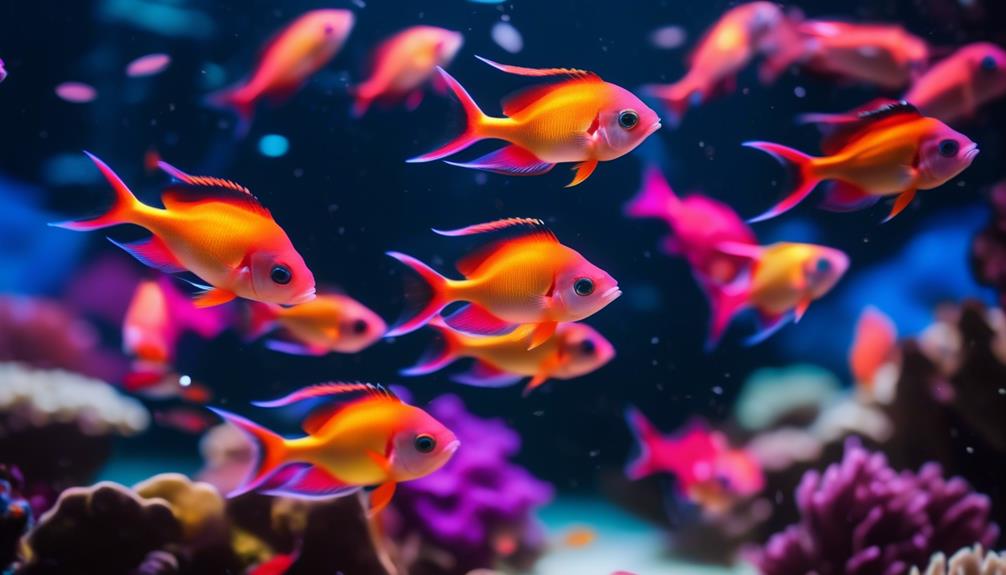
Shoaling behavior and stunning beauty define the captivating nature of Anthias fish. These vibrant saltwater fish are known for their vibrant coloring and their tendency to swim together in groups. Here are three key aspects that make Anthias fish truly remarkable:
- Shoaling Behavior: Anthias fish form tight-knit groups, known as shoals, where they swim together in unison. This behavior not only provides them with safety in numbers but also creates a mesmerizing spectacle in the aquarium.
- Colorful Beauty: Anthias fish are renowned for their breathtakingly vibrant colors. From vivid oranges and pinks to deep purples and blues, their striking hues make them a stunning addition to any saltwater tank.
- Graceful Movements: The elegant swimming patterns of Anthias fish add to their allure. With their flowing fins and graceful movements, these fish effortlessly glide through the water, captivating anyone who observes them.
Anthias Fish: Native Origins and Global Distribution
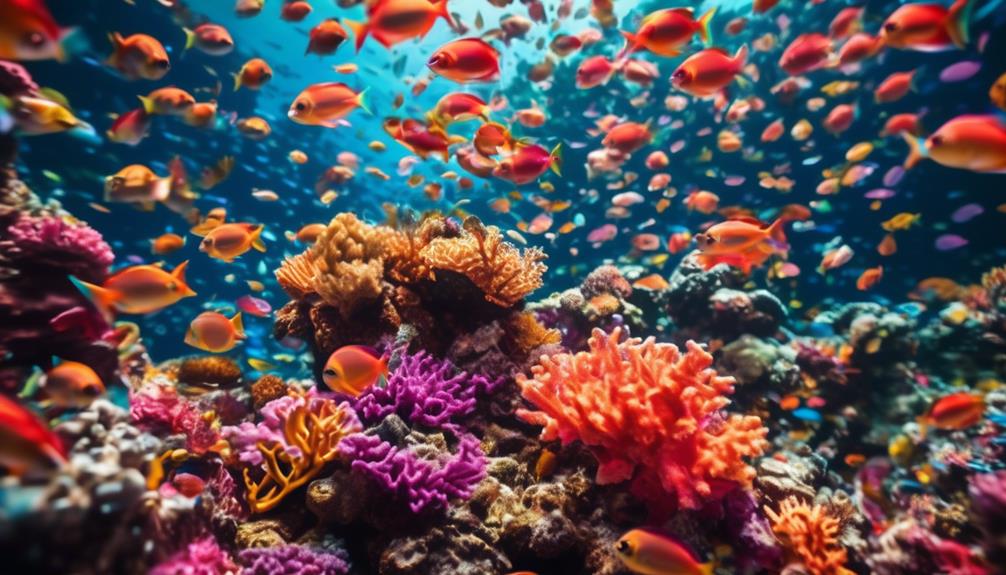
Captivating observers with their shoaling behavior and stunning beauty, Anthias fish have a fascinating history of native origins and global distribution. Native to the Mediterranean Sea and the Northeast Atlantic, these vibrant fish have a wide distribution in tropical and subtropical waters around the world. They can be found in regions such as the Red Sea, Indian Ocean, and Pacific Ocean. To engage the audience, here is a table showcasing some of the different species of Anthias fish and their respective regions of distribution:
| Species | Region of Distribution |
|---|---|
| Pseudanthias squamipinnis (Lyretail Anthias) | Red Sea, Indian Ocean |
| Pseudanthias dispar (Dispar Anthias) | Indo-Pacific |
| Pseudanthias bartlettorum (Bartlett's Anthias) | Western Pacific |
| Pseudanthias tuka (Square Anthias) | Pacific Ocean |
Anthias fish have truly conquered the oceans, bringing their vibrant colors and captivating beauty to saltwater tanks worldwide.
Anthias Fish: Care Tips for a Peaceful Tank
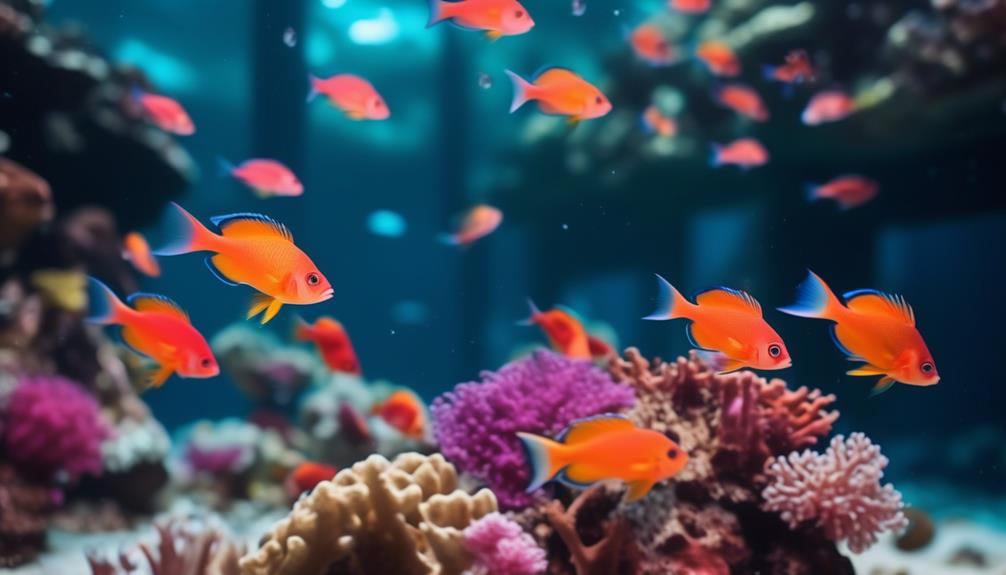
To create a peaceful tank environment for Anthias fish, it's important to carefully consider tank mates and create a suitable social hierarchy. Here are some care tips to ensure a peaceful tank:
- Research tank mates: Before adding any fish to the tank, research their compatibility with Anthias fish. Dwarf Anglefish, Assesors, Blennies, Gobies, Squirrelfish, and Tilefish are suitable tank mates.
- Understand social hierarchy: Anthias fish have complex social hierarchy systems. It's important to understand this behavior and provide enough space and hiding spots for subordinate fish to avoid aggression.
- Avoid stress: Active tank mates can cause stress in Anthias fish, leading to the death of more timid species. Male Anthias may also die from stress and over-exertion from chasing subordinate members of a harem. Ensure a peaceful and stress-free environment for their well-being.
Anthias Fish: Feeding, Breeding, and Varieties
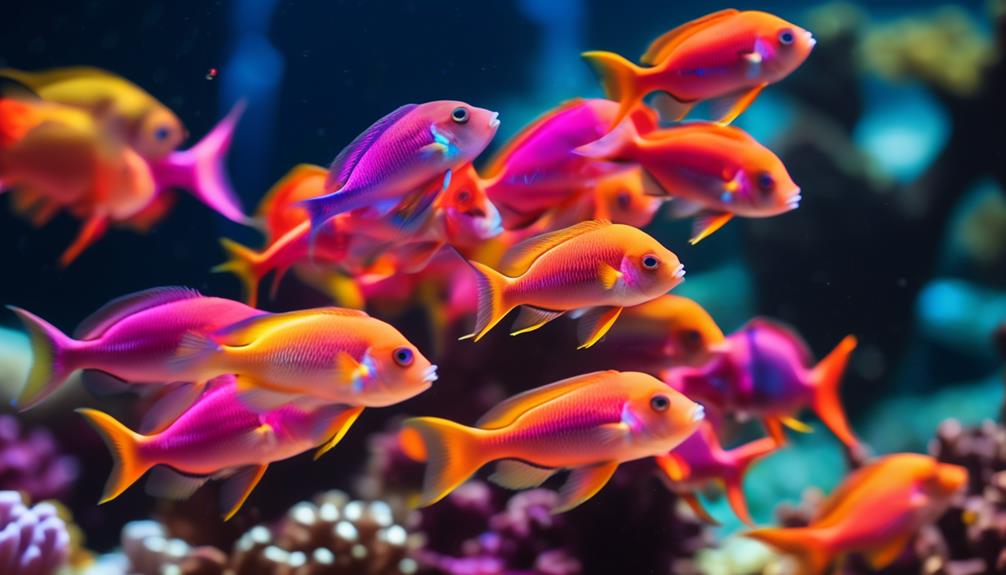
When it comes to Anthias fish, understanding their feeding habits, breeding behaviors, and the various varieties available is essential for their care in an aquarium.
Anthias primarily feed on zooplankton, baby brine shrimp, and rotifers. They can spawn in large aquariums but require specific conditions.
Anthias are protogynous hermaphrodites, with dominant females sometimes turning into males. Breeding can lead to aggressive fighting among dominant females and smaller males.
Various aquarium varieties of anthias are available, including Barletts, Dispar, Lyretail, Sunset, Square, and Yellow Spotted. It's important for aquarists to research the specific needs and behaviors of each variety to ensure proper care and compatibility in the tank.
Anthias Fish: Complex Social Hierarchy in Aquariums
How do Anthias fish establish and maintain their complex social hierarchy in aquariums? The answer lies in their unique behavior and interactions with other members of their species.
Here are three key factors that contribute to the establishment and maintenance of their social hierarchy:
- Size and Dominance: Anthias fish have a size-based hierarchy, with larger individuals dominating smaller ones. The largest male, known as the dominant male, holds the highest position in the hierarchy and is responsible for breeding with the females.
- Coloration and Display: Colorful displays play a crucial role in establishing dominance. Males showcase vibrant colors and perform elaborate courtship displays to attract females and assert their dominance over other males.
- Aggression and Territory: Aggression is a common feature in maintaining the social order. Dominant males aggressively defend their territories against rival males, ensuring their position in the hierarchy and access to resources.
Anthias Fish: Challenges of Replicating Shoaling Behavior
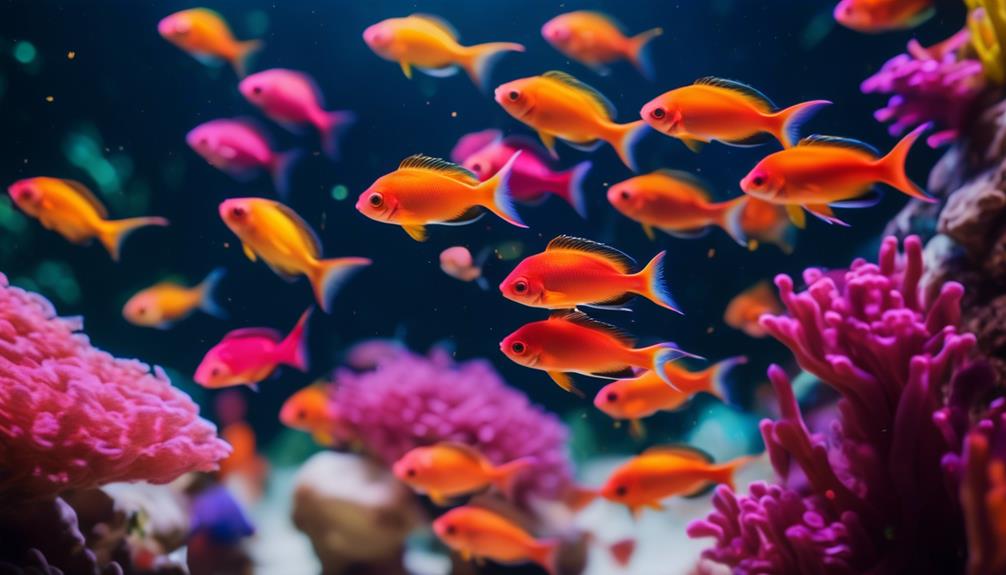
Establishing and maintaining the complex social hierarchy of Anthias fish in aquariums presents unique challenges when it comes to replicating their natural shoaling behavior.
Anthias are known for their vibrant coloring and their tendency to form tight-knit groups in the wild. In order to mimic this behavior in captivity, aquarists must create an environment that promotes social interaction and provides ample space for the fish to swim and shoal.
However, achieving these conditions can be difficult, as Anthias are highly sensitive to changes in their environment and can become stressed if their needs aren't met.
Additionally, maintaining a proper sex ratio within the group is crucial, as male Anthias can become aggressive if there aren't enough females present.
Anthias Fish: Maintaining a Healthy and Colorful Tank
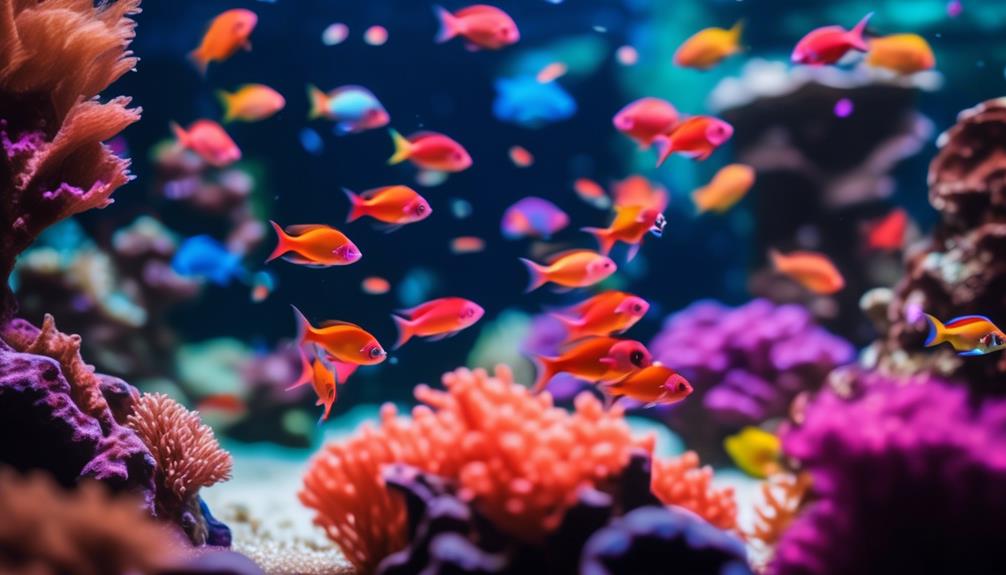
Maintaining a healthy and colorful tank for Anthias fish requires careful attention to their specific needs and a well-balanced environment. To ensure the well-being of these vibrant fish, here are three essential factors to consider:
- Water Quality: Anthias thrive in pristine water conditions. Regular water testing and maintenance of proper pH, temperature, and salinity levels are crucial. It's recommended to use a high-quality filtration system to remove excess waste and maintain water clarity.
- Diet and Feeding: Anthias are primarily zooplankton feeders. Providing a varied diet that includes live or frozen foods such as baby brine shrimp, mysis shrimp, and copepods is essential for their health and coloration. It's important to feed them multiple times a day in small quantities to mimic their natural feeding patterns.
- Tank Size and Tank Mates: Anthias are active swimmers, and they require a spacious tank with plenty of swimming space. Additionally, choosing suitable tank mates is crucial to maintain a harmonious environment. Compatible species such as dwarf angelfish, assessors, blennies, gobies, squirrelfish, and tilefish can coexist peacefully with anthias.
Frequently Asked Questions
What Are the Specific Water Parameters Required for Maintaining a Healthy Tank for Anthias Fish?
Maintaining a healthy tank for anthias fish requires specific water parameters. These include stable temperature (73-78°F), pH level (8.1-8.4), salinity (1.020-1.025), and proper filtration. Regular testing and monitoring are essential for their well-being.
Can Anthias Fish Be Kept With Aggressive Tank Mates?
Anthias fish should not be kept with aggressive tank mates. They are generally peaceful towards other fish but aggressive towards their own kind. It is important to research specific species to ensure compatibility with tank mates.
How Can I Encourage Breeding Behavior in My Anthias Fish?
To encourage breeding behavior in anthias fish, provide specific conditions in a large aquarium. Ensure a stable social hierarchy and reduce stress by avoiding aggressive tank mates. Research the species to determine the best feeding and environmental requirements.
Are There Any Specific Techniques for Managing the Social Hierarchy Among Anthias Fish in a Tank?
Managing the social hierarchy among anthias fish in a tank can be challenging. Aquarists must research specific species to ensure compatibility with tank mates. Stress caused by active tank mates can lead to the death of more timid individuals.
What Are the Most Common Diseases or Health Issues That Anthias Fish Are Prone To?
Anthias fish are prone to common saltwater fish diseases such as ich, velvet, and bacterial infections. They may also suffer from stress-related ailments due to aggressive tank mates or improper water conditions.
Are Colorful Snappers Compatible with Anthias Fish in Saltwater Tanks?
Colorful snappers thrive in large saltwater tanks and can coexist with anthias fish. Their vibrant colors and peaceful nature make them compatible tankmates. These snappers are known for their docile temperament, making them a perfect addition to a community saltwater tank, especially when paired with other non-aggressive species like anthias fish.
Conclusion
In conclusion, Anthias fish are truly the jewels of saltwater tanks, captivating aquarists with their vibrant colors and shoaling behavior.
While they require experienced care and attention, the beauty and uniqueness they bring to an aquarium are unmatched.
From their complex social hierarchy to their wide distribution, Anthias fish are a fascinating species that continue to captivate fish enthusiasts worldwide.
With proper care and a peaceful tank environment, these stunning fish will thrive and create a beautiful and colorful display.




